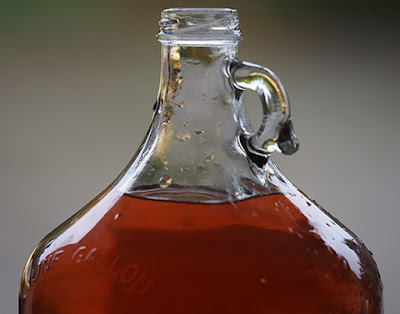Belatedly I report that I spent most of Christmas Eve this year handling wine. I racked our 2018 Cabernet (six gallons) and our 2018 Sangiovese (four gallons) for the first time, assuming (although not confirming) that malolactic fermentation had gone to completion. I lightly sulfited the wine and would have added oak staves, but I had none on hand and it was a holiday. Today, writing on New Year's Eve, I still haven't added the oak, but will do so when the stores open again on January 2nd. So far, the wine seems sound and well on its way.
I also racked a gallon of rosé that I made from subpar grapes that I didn't want to leave sitting on the skins during fermentation. I decided to try to use this wine to make a sparkling wine (a first attempt). Having made sparkling cider several times before, it seemed easy enough, but I won't be able to riddle the bottles and clear the lees after the secondary fermentation in the bottle, so, while the wine will be sparkling, it will have a little yeast debris in the bottom, like a bottle-fermented beer rather than like a crystal clear Champagne. We'll see.
After racking, I bottled the wine and dosed it at 1.4oz of sugar/gallon for the in-bottle fermentation. The only complication was that I didn't realize that sparkling wine bottles are larger at the lip than the beer bottles I use for making cider. Thus, my crown caps and capper were the wrong size. I had to go to the supply store to buy larger caps and a larger fitting for my capping device. It didn't go very smoothly because the fitting kept separating from the capper, but I did get eventually get the bottles capped. They are now (presumably) undergoing secondary fermentation in the bottles.
Subscribe to:
Post Comments (Atom)







No comments:
Post a Comment